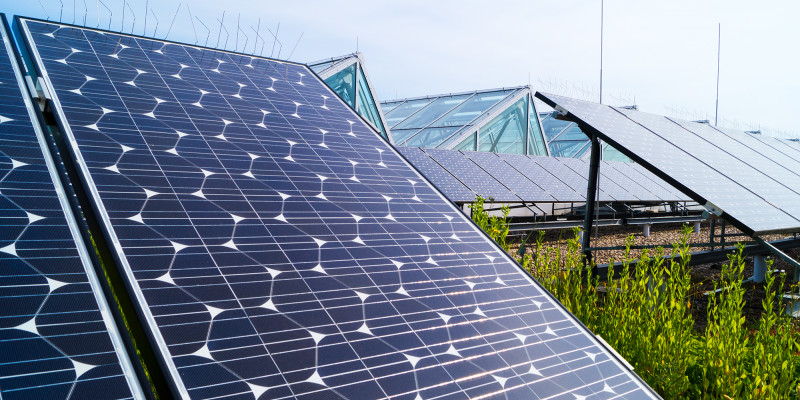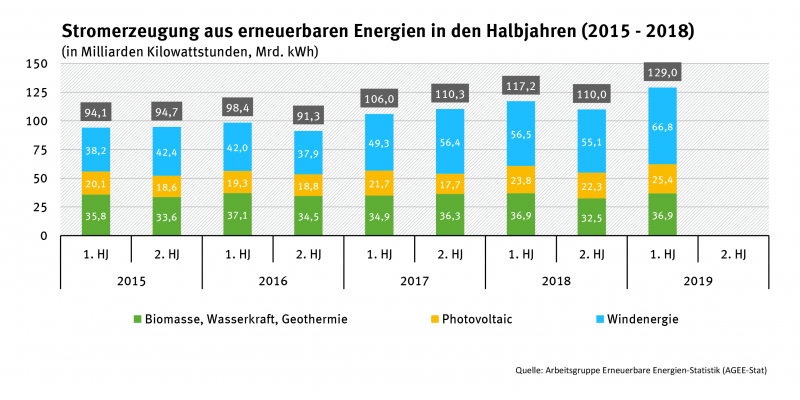Wind energy again played a major role in electricity production in the first half of the year. After the month of January with above-average winds, the windy month of March in particular set records: wind energy installations produced 16.6 billion kWh of electricity –for the first time more than the output of lignite and hard coal-fired power plants combined.
Photovoltaic energy also played a significant role in the success of renewables in the first half of the year. New record highs were set as a result of the great number of new solar power units installed early in the year plus sustained periods of sunny weather. As a result, electricity production from solar power installations was six percent higher than in the same period of the previous year.
The rate of new build of wind energy turbines has slowed in 2019. In the first half of the year, about 275 megawatts net of newly installed onshore wind power only were reported – a decline of over 80 percent compared to the same period in the previous year (1,626 MW), and thus the lowest rate of development in the sector in about 20 years.
The expansion of photovoltaic energy in 2018 exceeded the target range of 2,400 to 2,600 megawatts per year. In the first half of 2019, the output of new installations increased by about 50 percent, or 2,127 MW.
The main factors influencing the heating sector are the mild weather conditions in the first half of the year; therefore output remained more or less unchanged. However, there is a general trend of an increase in the stock of heat pumps at same-level turnover, and therefore a higher level of heat production from near-surface geothermics and ambient heat.
Preliminary turnover data on the use of renewable energies in the transport sector point to a decline in the use of biodiesel and bioethanol of eight and six percent respectively. Renewable electricity is the primary energy source used in rail transport. The higher share of renewable energies in the electricity sector in general boosted its share by around ten percent, up to around 2.5 million kWh. Electricity consumption in rail transport remained stable.
Further information:
Working Group on Renewable Energy Statistics (AGEE-Stat)
The Working Group on Renewable Energy Statistics (AGEE-Stat), which records statistics on the use of renewables on behalf the Federal Ministry for Economic Affairs (BMWi), makes projections on the development of renewable energy based on the most updated data. Besides its annual publication "Renewable Energy Sources in Figures", AGEE-Stat also issues monthly and quarterly reports with updated figures on renewables in the current year. Since 2016 the offices of AGEE-Stat have been located at the German Environment Agency in Dessau-Roßlau.
 Click to enlarge
Click to enlarge


